
USS Growler (SS-215), a Gato-class submarine, was the third ship of the United States Navy named for the growler.
Battlefleet Gothic is a naval miniature wargame that was produced by Games Workshop from 1999 to 2013 with Andy Chambers as the primary developer. A spin-off of the science-fantasy setting of Warhammer 40,000, the game has players command fleets of large spaceships belonging to one of several spaceborne factions. Although the wargame's miniatures and rulebooks are no longer supported by Games Workshop, two video game adaptations have been made since its cancellation in 2013.
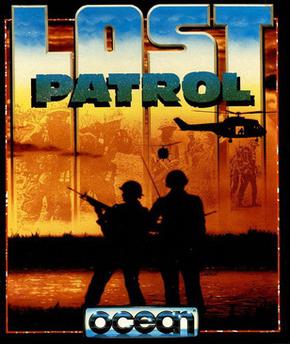
Lost Patrol, also known as The Lost Patrol, is a survival action role-playing strategy video game developed by Shadow Development and published by Ocean Software for the Amiga and Atari ST computers in 1990. An MS-DOS port by Astros Productions was published in 1991. Set during the Vietnam War, the game follows a squad of United States Army soldiers who are stranded behind enemy lines after their helicopter crashes, and must reach a U.S. military outpost for rescue.

Fire Power is a military tank action game developed by Silent Software for the Amiga. It was released in 1987 and published by MicroIllusions and Activision. Ports were released for the Apple IIGS, the Commodore 64 and for MS-DOS in 1988. An Atari Lynx version was planned but development never started due to internal conflict with Epyx.

Wolfpack is a World War II submarine simulator published by Broderbund in the 1990s, for Amiga, Atari ST, DOS, and Macintosh. It simulates combat actions between wolf packs of German U-boats and convoys of Allied destroyers and merchant vessels in the Battle of the Atlantic.

B-Wings is a vertically scrolling shooter first released as an arcade video game by Data East in 1984. A version was released in 1986 for the Family Computer. It was Data East's very first home release for the console.
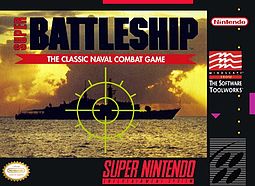
Super Battleship is a naval simulator video game released for the Genesis and Super NES in 1993. The game is strictly single-player and is primarily a strategy game with some real-time elements. It is based on the Battleship board game by the Milton Bradley Company.

Invasion Orion is a 1979 science fiction strategy game written and published by Automated Simulations. It is one or two player sequel to the original two-player Starfleet Orion which was published in late 1978. The game was written in BASIC for the Commodore PET and TRS-80 and ported to the Atari 8-bit computers and Apple II.

Nautilus is a video game for Atari 8-bit computers created by Mike Potter and published by Synapse Software in 1982. The players control a submarine, the Nautilus, or a destroyer, the Colossus, attempting to either destroy or rebuild an underwater city. The game the first to feature a "split screen" display to allow both players to move at the same time.
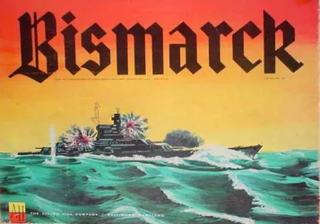
Bismarck is a board wargame published by Avalon Hill in 1962 that simulates the hunt for the Bismarck.

Dive Bomber is a video game developed by Acme Animation in 1988 for the Commodore 64. It was ported to Atari ST, Apple II, ZX Spectrum and MS-DOS.

Sea Battle is a multiplayer strategy game released by Mattel for its Intellivision video game system in 1980. In the game, players command fleets of naval vessels attempting to invade the harbor of their opponent.
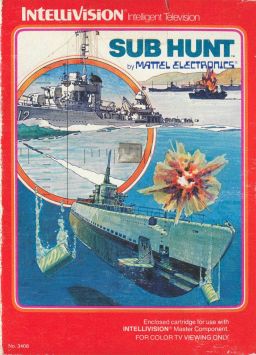
Sub Hunt is a submarine simulator video game released by Mattel for its Intellivision video game system in 1982. Players take control of a wolfpack of submarines attempting to stop an enemy invasion.

The Hunt for Red October is a video game based on the 1984 book The Hunt for Red October by Tom Clancy. It was released in 1987 and was available for the Atari ST, Amiga, Apple II, Macintosh, ZX Spectrum, MSX, Commodore 64, and IBM PC. A port for the Apple IIGS was released in 1989. The game is a combination of submarine simulator and strategy game. The player navigates the Red October towards U.S. waters while avoiding the Soviet Navy.
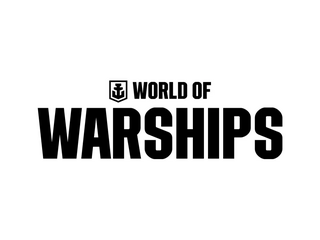
World of Warships is a naval warfare-themed free-to-play multiplayer online game developed and published by the Cypriot game company Wargaming. Players control warships of choice and can battle other random players on the server, play cooperative battles against bots, or participate in an advanced player versus environment (PvE) battle mode. For the most skilled players, two seasonal competitive modes are also available.

Dragonriders of Pern is a video game published by Epyx in 1983 based on Anne McCaffrey's book series of the same name. The game was released for the Atari 8-bit computers and Commodore 64.

Submarine Commander is a simulation video game for Atari 8-bit computers written by Dean Lock and published by Thorn EMI Computer Software in 1982. A VIC-20 port by Gary York was released in 1983 and an Apple II version by Patrick Buckland the same year. The Atari version was re-released in 1985 on cassette on the Sparklers budget label. A version for the TI-99/4A was announced but was not released until 1986 when a third party bought the rights.
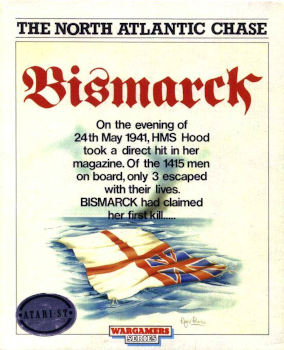
Bismarck is a turn-based strategy video game developed by Personal Software Services and published by Mirrorsoft. It was first released for the Commodore 64 and ZX Spectrum in 1987 for the United Kingdom. It was ported to Amiga, Apple II, Atari ST and Atari 8-bit home computers in both the United Kingdom and the United States the following year. The game is the tenth instalment in the Strategic Wargames series. In the game, the player can choose to control either the German battleship Bismarck or command the pursuing fleet of Royal Navy ships.
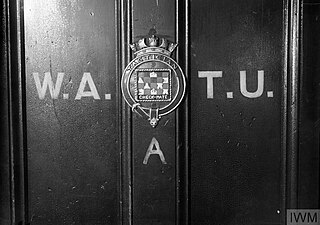
The Western Approaches Tactical Unit (WATU) was a unit of the British Royal Navy created in January 1942 to develop and disseminate new tactics to counter German submarine attacks on trans-Atlantic shipping convoys. It was led by Captain Gilbert Roberts and was principally staffed by officers and ratings from the Women's Royal Naval Service (Wrens). Their primary tool for studying U-boat attacks and developing countermeasures was wargames. After the U-boat threat to merchant shipping was defeated, WATU continued to develop anti-submarine tactics for later stages of the war, including Operation Overlord and the Pacific War. WATU trained naval officers in its tactics by hosting week-long training courses in which the students played wargames. WATU formally ceased operations at the end of July 1945.

Rorke's Drift is a strategy video game for Atari ST, Amiga and MS-DOS home computers, released in 1990. The game is a recreation of the Battle of Rorke's Drift during the 1879 Anglo-Zulu War. The player assumes command of the British garrison at the Rorke's Drift shortly before the arrival of the 4,000-strong attacking Zulu force. The post's 137 defenders are rendered as individual characters which the player must order to perform actions. The game is played in real time and lasts from 4.30pm on 22 January 1879 until 7am the following morning. The game received mixed reviews, with critics praising the graphics and criticising the slow pace and complicated orders system.


















